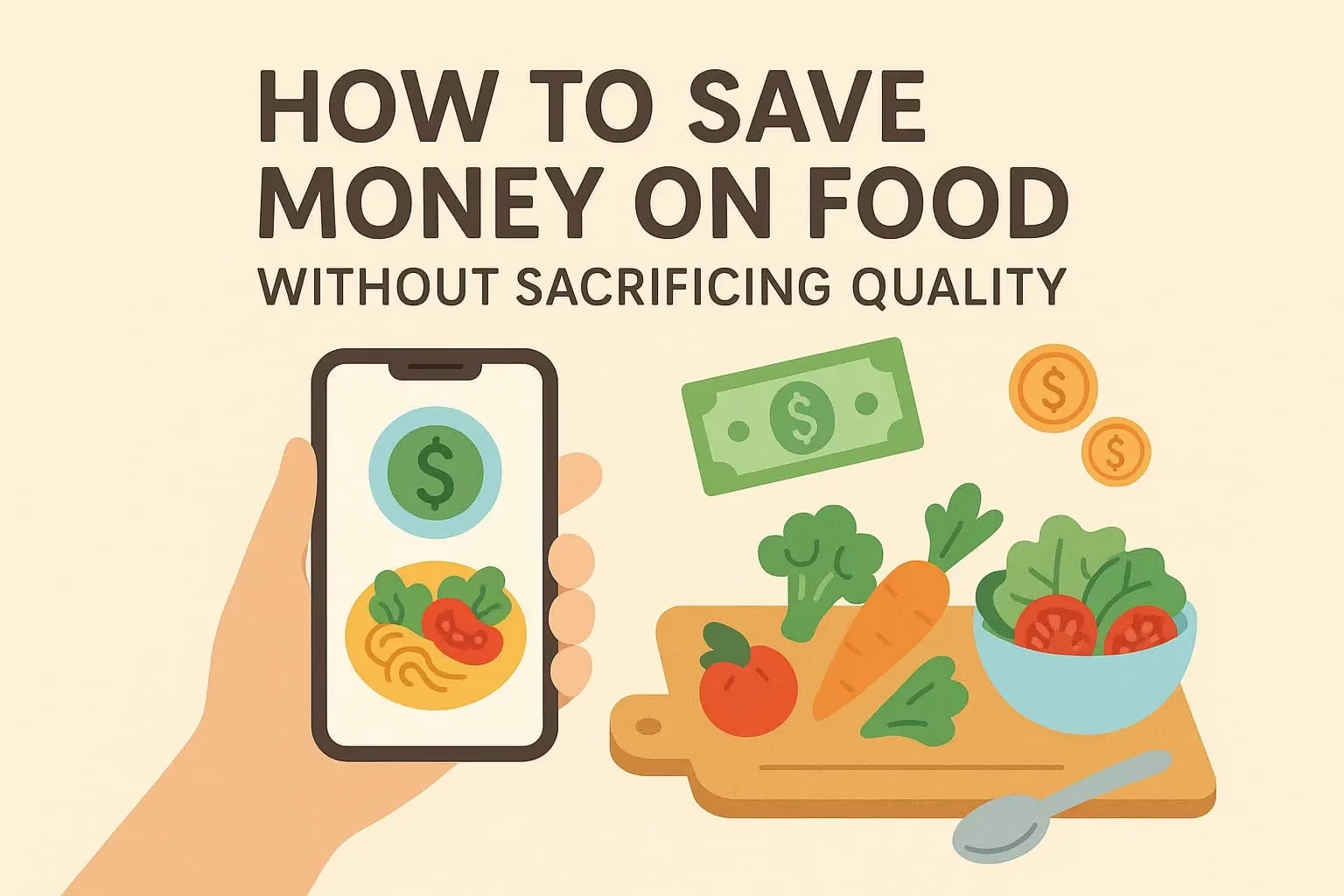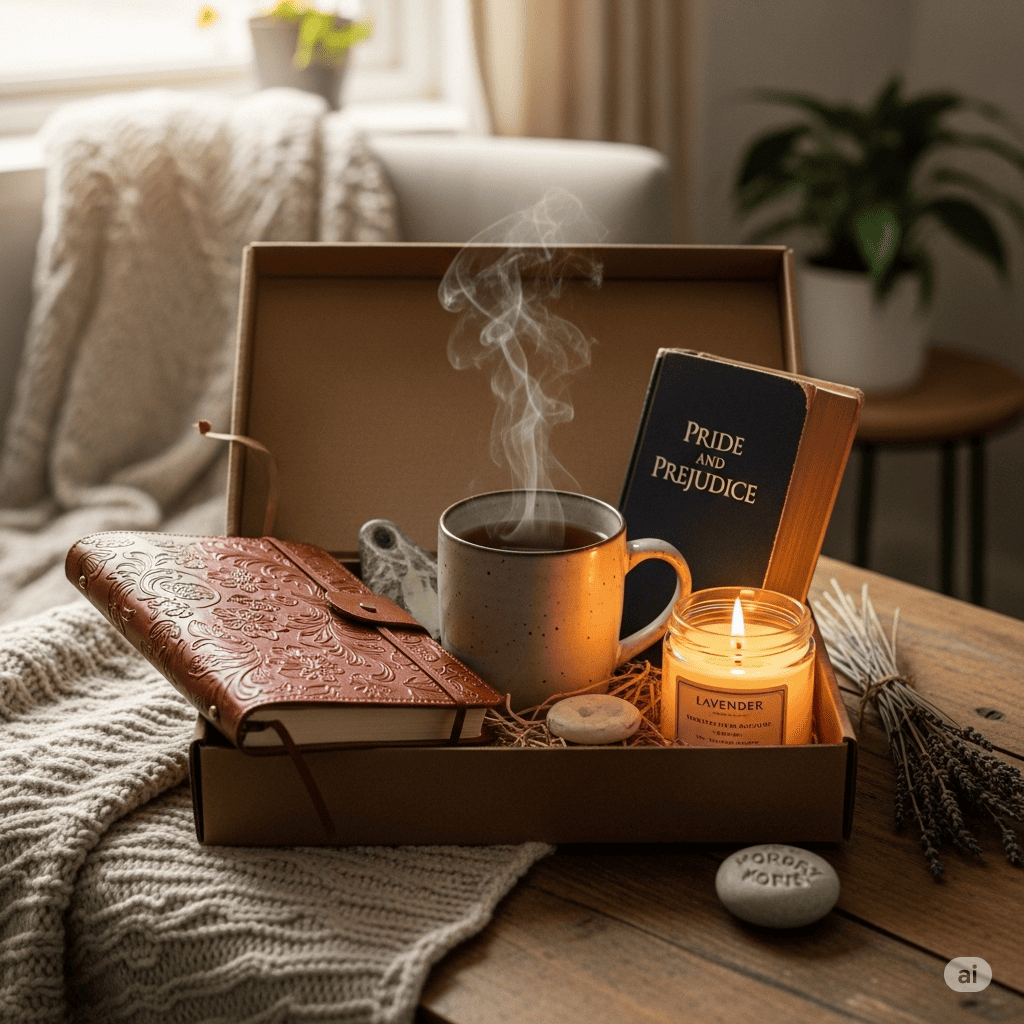Some days feel heavier than others. You wake up anxious, emotions feel overwhelming, or something unexpected knocks you off balance. In those moments, it’s hard to know what will help — and even harder to reach for it.
That’s why having a self-soothing box ready to go is such a powerful act of extreme self-care.
A self-soothing box is a personalized, comforting toolkit filled with items, reminders, and resources that help you feel safe, calm, and grounded when life gets hard. It’s like having a loving friend in a box — a way to support yourself with gentleness and intention.
In this article, you’ll learn how to build your own self-soothing box and why it’s one of the best emotional support tools you can give yourself.
What Is a Self-Soothing Box?
A self-soothing box is a container (physical or digital) where you keep supportive items and strategies for moments when you’re:
- Anxious or overwhelmed
- Grieving or heartbroken
- Emotionally drained
- Triggered or overstimulated
- Dissociative or disconnected from your body
- Struggling with mental health
It’s not about fixing everything — it’s about creating a pause, a soft space where you can begin to regulate and care for yourself.
Why This Practice Works
In moments of distress, your nervous system is dysregulated. Your thoughts race. Your body feels unsafe and your emotional capacity shrinks.
Having a pre-made, low-effort box:
- Reduces decision fatigue
- Brings you back into your body through sensory input
- Provides comfort and familiarity
- Reconnects you to your inner resources
- Reminds you that you are not alone, even when you feel like you are
It’s one of the most practical ways to say:
“I’m here for me, even when things are hard.”
What to Include in Your Self-Soothing Box
This is deeply personal — build what resonates with you. Here’s a guide based on categories that support emotional regulation:
1. Soothing for the Senses
Engaging your five senses helps calm the nervous system.
Ideas:
- A soft blanket, plush fabric, or warm scarf
- A calming essential oil (lavender, sandalwood, orange)
- Herbal tea packets (chamomile, peppermint, lemon balm)
- Scented candle or incense
- Smooth stones, fidget toys, or textured objects
- Calming music playlist or noise-canceling earbuds
- Breath mints or dark chocolate for grounding taste
These small items create physical comfort during emotional storms.
2. Grounding Tools
To reconnect with the present and feel more in your body.
Ideas:
- Instructions for the 5-4-3-2-1 grounding exercise
- A small journal with calming prompts
- Printed breathing techniques
- Body scan script
- A favorite rock, shell, or object from nature
- Weighted eye pillow or stress ball
- List of grounding affirmations or mantras
These tools help shift you from reactivity to regulation.
3. Comforting Words and Reminders
When your thoughts become loud or cruel, these gentle truths anchor you.
Ideas:
- A handwritten note to yourself: “You’re doing your best.”
- Printed affirmations: “It’s okay to feel this way.”
- Screenshots or printed messages from loved ones
- Quotes or poems that help you feel seen
- A letter from your future self
- A “permission slip” (e.g., “I have permission to rest, to feel, to not be okay.”)
These messages act as emotional lifelines.
4. Supportive Distractions
To help shift your focus when emotions feel too intense.
Ideas:
- A coloring book or sketchpad
- A deck of mindfulness or journaling cards
- A puzzle or calming game
- A comforting book or short story
- A printed list of feel-good movies or videos
- Small craft supplies (like yarn, embroidery, or origami paper)
This isn’t about avoiding — it’s about creating space to breathe.
5. Digital Elements (Optional)
Create a digital folder or notes app with:
- Your favorite meditations or grounding videos
- A playlist of calming songs
- Screenshots of helpful Instagram posts or threads
- Journaling prompts or guided reflections
- Short, inspiring videos or TED talks
- Contacts you can reach out to if you need to talk
Having digital access ensures support even when you’re away from home.
Tips for Creating Your Box
- Use a physical box, pouch, basket, or drawer — whatever feels inviting
- Make it easy to reach, not hidden away
- Personalize it with colors, textures, or photos you love
- Update it as your needs change
- Label it something soothing like “My Support Kit” or “Comfort Box”
It’s okay if you don’t use it every day. What matters is knowing it’s there when you need it.
When to Use Your Self-Soothing Box
Reach for your box when you feel:
- Emotionally overwhelmed
- Numb or disconnected
- On the verge of panic
- Stuck in negative thoughts
- Lonely or emotionally unsafe
- Like you’re about to spiral
Or simply when you want to create a ritual of slowing down and tending to yourself.
Sample Self-Soothing Box Checklist
Here’s an example to inspire your own version:
✅ Soft socks
✅ Lavender oil roll-on
✅ A favorite calming tea
✅ Printout of 4-7-8 breathing technique
✅ Quote cards
✅ Small journal and pen
✅ Fidget ring
✅ Stone from your favorite hiking spot
✅ Letter to your future self
✅ Photo of someone you love
✅ List titled “Things That Help Me”
✅ Coloring page
✅ Access to a calming playlist
Final Thought: Be the Safe Place You Need
You won’t always be able to control what life throws at you. But you can control how you show up for yourself when it gets hard.
A self-soothing box says:
“I matter.”
“I don’t have to tough this out alone.”
“Even at my lowest, I can offer myself care.”
So build your box. Fill it with love. Reach for it often.
Let it be a reminder that you are worthy of care — especially on the hard days.






